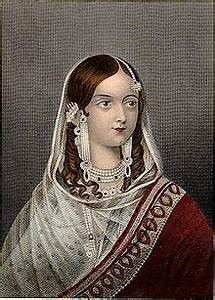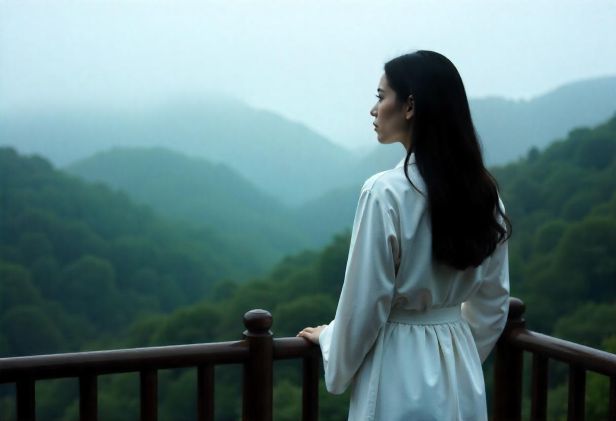Daily consumption of walnuts may reduce the risk or slow the progression of age-related cognitive decline, mild cognitive impairment and Alzheimer’s disease

Are you concerned about your cognitive abilities declining with the ageing process? Sometimes, people suffer from progressive reduction in comprehension, understanding and memory even before other changes of ageing set in apparently. It is a red signal or a cautionary warning that most probably, it could be the beginning of mild cognitive impairment.
Cognition is the terminology that denotes the mental process of thinking, learning, and understanding. It involves a number of interacting skills, including attention, language, memory, and perception.
Cognitive impairment is much more severe than the age-related declining memory and difficulties of comprehension. Of late it is discussed with enhanced significance by the global population due to the spike in its incidence. Ageing as well as some hereditary and environmental factors accelerate the nerve cell degeneration within the brain and cause cognitive impairment or decline.
Nowadays there is a global spike in the occurrence of Alzheimer’s disease which is considered as the major cognitive impairment. Alzheimer’s runs in families, however it has been detected in people with no positive family history of the disease. Therefore, the impact of free radicals on brain cells came into the view as the most probable cause of the nerve degeneration and it was researched meticulously across the globe. It has been confirmed that Cognitive impairment occurs as a result of free radical attack on brain cells.
How is Alzheimer’s disease linked with free radicals?
Amyloid beta protein (Aβ) is the main component of amyloid plaques in the brains of people with Alzheimer’s disease. Several studies suggest that Aβ stimulates the production of free radicals in nerve cells, which leads to oxidative damage and cell death.
Free radicals are various types of chemicals which either reach human body from outside through numerous sources or they are generated as byproducts of metabolism of the body. Free radicals cause oxidative stress to body cells. Nerve cells or neurons are not exempted from this damage, instead, they suffer more intensely.
Aβ can also induce neuroinflammation by increasing pro-inflammatory cytokines and enzymes.
Oxidative stress and neuroinflammation have important roles in the aging process, mild cognitive impairment (MCI), Alzheimer’s disease (AD), and other brain disorders.
Currently the only solution that has been emerged to fight against free radical damage is antioxidants.
What are antioxidants?
These compounds are effective warriors against the free radical attack and consequent damage to cells and tissues. Antioxidants prevent damage to nerve cells or neurons also. Thus, the antioxidants may function as very potent compounds against cognitive decline or impairment resulting from nerve cell damage or degeneration.
We may get the advantage of antioxidant protection by consuming various kinds of vegetables, fruits, seeds and nuts.
Among the potent antioxidant foods walnuts play a pivotal role in protecting the nervous system and brain from free radical damage. Many research studies corroborate the good effects of walnuts on the brain and nervous system
Walnuts
Walnuts are nutritious seeds native to North and South America, southern Europe, Asia, and the West Indies. Walnut is the common name for any of the large, deciduous trees comprising the genus Juglans of the flowering plant family Juglandaceae.
The word “walnut” derives from Old English wealhhnutu, literally “foreign nut,” with wealh meaning “foreign.” Walnuts are used for their edible fruit, their wood, and their ornamental purposes. There are many species of walnuts. The nuts of all the species are edible, but the walnuts commonly available in stores are from the Persian walnut, the only species that has a large nut and thin shell, with the edible portion most easily separated from the shell.
These seeds have immense potential to improve brain & cardiovascular health. Walnuts may be effective in improving chronic inflammation and neurodegeneration of brain.
Walnuts are also great immunity boosting foods. A study [1] shows that walnut could significantly improve humoral and cell-mediated immunity. Walnut proteins boost the immune system and perform their immunomodulatory functions.
Walnuts also helps to reduce blood sugar levels. A large study of 83,818 women (age: 34–59 years) showed that dietary supplementation of 1 oz of nuts, such as walnuts, five times or more per week decreased the risk of developing type 2 diabetes [5].
Nutritional value of walnuts:
According to the U.S. Department of Agriculture (USDA) National Nutrient Database, 1 cup of unbranded, organic walnuts (30 grams) contains:
Energy: 200 calories
Carbohydrate 3.89 grams (g)
Sugar: 1 g
Fiber: 2 g
Protein: 5 g
Fat: 20 g
Calcium: 20 milligrams (mg)
Iron: 0.72 mg
Sodium: 0 mg
Walnuts also provide minerals such as:
manganese
copper
magnesium
phosphorus
vitamin B6
iron
Walnuts – Great source of omega fatty acids to boost brain health
Walnuts contain a lot of polyunsaturated fatty acids, which can improve heart and brain functions. Walnuts contain alpha-linolenic and linoleic acids, which may have anti-inflammatory effects that keep blood vessels healthy and reduce bad blood cholesterol.
How does walnut consumption help to fight against cognitive impairment?
Walnuts contain several components that have antioxidant and anti-inflammatory effects.
Animal and human studies suggest that supplementation with walnuts in the diet may improve cognition and reduce the risk and/or progression of Mild cognitive impairment and Alzheimer’s disease [2].
Walnuts have a high content (3.68 mmol/oz) of antioxidants, including flavonoids, phenolic acid (ellagic acid), melatonin, folate, gamma tocopherol (vitamin E), selenium, juglone, and proanthocyanidins .
Walnuts also provide protein (4 g/oz), fiber (2 g/oz), phosphorus (10% daily value), and magnesium (11% daily value).
Walnuts have mainly polyunsaturated fat (13 g of 18 g total fat per 1 oz walnuts), of which the alpha linolenic acid [ALA] amount is 2.5 g.
Omega fatty acids in walnuts have anti-inflammatory properties.
walnuts contain a high amount of n-3 α-linolenic acid (ALA), a plant-based omega-3 fatty acid that has a highly potent anti-inflammatory effect.
ALA is the precursor for eicosapentaenoic acid (EPA) and docosahexaenoic acid (DHA), which are known to have anti-inflammatory effects.
Studies have shown that ALA inhibits inflammation by downregulating iNOS (thus inhibiting NO production), COX-2, and inflammatory cytokines (IL-1β, IL-6, TNF-α)
In another study with older women, higher long-term intake of walnuts was reported to be associated with better cognitive performance. In this study, 15,467 women (70 years of age or older; mean age: 74 years) participated.
The National Health and Nutrition Examination Study (NHANES) of an adult population [of age groups 20–59 years; 60 years and older) in the United States also showed better cognition scores with walnut consumption.
How do walnuts help to prevent cognitive impairment?
The potential mechanisms by which dietary consumption of walnuts may reduce the risk or slow the progression of age-related cognitive decline, mild cognitive impairment and Alzheimer’s disease include:
- Walnuts Inhibit Aβ Fibrillization and Solubilize Aβ Fibrils which are important diseases causing deposits of nerve cells in Alzheimer’s disease.
- Walnuts Decrease alpha beta protein or Aβ-induced Oxidative Stress and Cell Damage. The components of walnuts, such as flavonoids, ellagic acid, gamma tocopherol, and melatonin, are known to have antioxidant and free-radical scavenging properties.
Parkinsons disease also is a nervous system disease associated with cognitive impairment. Walnut extract has shown to improve symptoms of Parkinson’s Disease (postural balance, motor coordination, and movement), These seeds have been found to be effective in reducing oxidative stress, and protecting neurons[4].
Include walnuts in your daily foods for better brain health
Walnut may be used as ingredients of porridge, cheese sauce, Apple walnut salad, fruit muffins, granola bars and brownie balls. Walnut cookies& Walnut cakes also are yummy and nutritious disserts.
Reference
- https://www.sciencedirect.com/science/article/pii/S1756464620302929
- https://pmc.ncbi.nlm.nih.gov/articles/PMC7071526/
- https://pubmed.ncbi.nlm.nih.gov/24886736/
- https://pubmed.ncbi.nlm.nih.gov/26784178/
- .Jiang R., Manson J.E., Stampfer M.J., Liu S., Willett W.C., Hu F.B. Nut and peanut butter consumption and risk of type 2 diabetes in women. JAMA. 2002;288:2554–2560. doi: 10.1001/jama.288.20.2554. [DOI] https://pubmed.ncbi.nlm.nih.gov/12444862/
- https://www.ncbi.nlm.nih.gov/pmc/articles/PMC5994573/
- https://www.health.harvard.edu/blog/health-benefits-of-walnuts-2018081314526
- https://www.britannica.com/plant/walnut-tree-and-nut
- https://www.newworldencyclopedia.org/entry/Walnut
- image courtesy-freepik.com
Recommended For You
Nuts &seeds
Nuts are nutrient dense foods, made up of unsaturated fat Omega fatty acids which play significant role in brain ,heart and hair health.
walnut is the edible seed of any tree of the genus Juglans (family Juglandaceae), particularly the Persian or English walnut, Juglans regia. They are accessory fruit because the outer covering of the fruit is technically an involucre and thus not morphologically part of the carpel; this means it cannot be a drupe but is instead a drupe-like nut.
After full ripening, the shell is discarded, and the kernel is eaten.
Walnuts
Walnuts are a great immunity boosting foods as well as cardiovascular and neuronal health protecting nuts.Include them in your diet to stay
English walnuts without shells are 4% water, 15% protein, 65% fat, and 14% carbohydrates, including 7% dietary fiber








